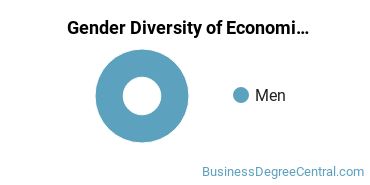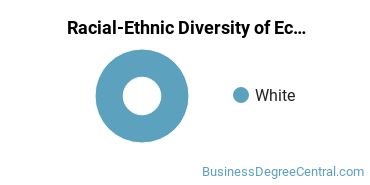Economics at Washburn University
If you are interested in studying economics, you may want to check out the program at Washburn University. The following information will help you decide if it is a good fit for you.Washburn University is located in Topeka, Kansas and approximately 5,880 students attend the school each year. Of the 175 students who graduated with a bachelor’s degree from Washburn University in 2021, 8 of them were economics majors.
Want to know more about the career opportunities in this field? Check out the Careers in Economics section at the bottom of this page.
Featured schools near , edit
Washburn University Economics Degrees Available
- Bachelor’s Degree in Economics
Online Classes Are Available at Washburn University
If you are a working student or have a busy schedule, you may want to consider taking online classes. While these classes used to be mostly populated by returning adults, more and more traditional students are turning to this option.
For those who are interested in distance learning, Washburn University does offer online courses in economics for the following degree levels:
- Bachelor’s Degree
Washburn University Economics Rankings
The following rankings from College Factual show how the economics progam at Washburn University compares to programs at other colleges and universities.
Note: Rankings don't always give a complete picture of a school's strengths and weaknesses, so it's a good idea to extend your research and also look at other factors when trying to decide if the school is right for you.
Bachelor’s Degree Overall Quality & Other Notable Rankings
The economics major at Washburn University is not ranked on College Factual’s Best Colleges and Universities for Economics. This could be for a number of reasons, such as not having enough data on the major or school to make an accurate assessment of its quality.
| Ranking Type | Rank |
|---|---|
| 7 | |
| 478 | |
| 510 | |
| 570 | |
| 598 |
Economics Student Demographics at Washburn University
Take a look at the following statistics related to the make-up of the economics majors at Washburn University.
Washburn University Economics Bachelor’s Program

Prospective students may be interested in knowing that this school graduates 19% more racial-ethnic minorities in its economics bachelor's program than the national average.*
The following table and chart show the race/ethnicity for students who recently graduated from Washburn University with a bachelor's in economics.

| Race/Ethnicity | Number of Students |
|---|---|
| Asian | 0 |
| Black or African American | 0 |
| Hispanic or Latino | 3 |
| White | 3 |
| International Students | 1 |
| Other Races/Ethnicities | 1 |
Washburn University also has a doctoral program available in economics. In 2021, 0 student graduated with a doctor's degree in this field.
Concentrations Within Economics
Economics majors may want to concentrate their studies in one of these areas. The completion numbers here include all graduates who receive any type of degree in this field from Washburn University. Some of these focus areas may not be available for your degree level.
| Concentration | Annual Degrees Awarded |
|---|---|
| General Economics | 8 |
Careers That Economics Grads May Go Into
A degree in economics can lead to the following careers. Since job numbers and average salaries can vary by geographic location, we have only included the numbers for KS, the home state for Washburn University.
| Occupation | Jobs in KS | Average Salary in KS |
|---|---|---|
| Market Research Analysts and Marketing Specialists | 6,010 | $64,910 |
| Managers | 2,420 | $102,560 |
| Survey Researchers | 130 | $51,640 |
| Economics Professors | 90 | $114,000 |
| Economists | 40 | $72,600 |
References
*The racial-ethnic minorities count is calculated by taking the total number of students and subtracting white students, international students, and students whose race/ethnicity was unknown. This number is then divided by the total number of students at the school to obtain the racial-ethnic minorities percentage.
- College Factual
- National Center for Education Statistics
- O*NET Online
- Image Credit: By Marion Doss under License
More about our data sources and methodologies.
Featured Schools
You have goals. Southern New Hampshire University can help you get there. Whether you need a bachelor's degree to get into a career or want a master's degree to move up in your current career, SNHU has an online program for you. Find your degree from over 200 online programs.
Visit School
